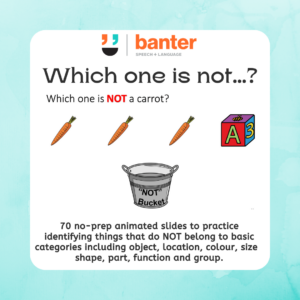(L325) Which One Is Not…? Mega Workout: Identifying Things that DO NOT Belong to Basic Categories
$9.00 including GST
This 75-page no-prep Powerpoint pack is designed to help people to practice identifying things that do NOT belong to basic categories. Featuring words and pictures, it is suitable for people of different ages and abilities.
In the pack, people will identify things that are NOT in the following categories:
-
High frequency nouns (with identical images)
-
High frequency nouns (with mixed images)
-
Perceptual (concepts – colour, size, shape)
-
Location (certain setting)
-
Parts
-
Functional (verbs)
-
Categorical (groups)
To make it harder, simply ask the student or person to explain (orally or in writing) “why” the objects they have selected do NOT belong to the named category, but instead belong in a different category, thus stimulating verbal reasoning skills, expressive syntax using the subordinating conjunction “because”, and expressive semantic language skill development, generally.
Description
At around 48-54 months of age, typically developing children can group items into basic categories, and also identify things that do NOT belong to the group.
Some people struggle with these tasks, however, including children with language and/or learning disorders, and some people with Autism Spectrum Disorders.
Identifying in/out relationships and classifying things into groups are fundamental cognitive skills needed for school, at home, in the community, and for several activities of daily living (you can read more about category skill development here).
This 75-page no-prep pack is designed to help people to practice identifying things that do NOT belong to basic categories. Featuring words and pictures, it is suitable for people of different ages and abilities.
In the pack, students will identify things that are NOT in the following categories:
-
High frequency nouns (with identical images)
-
High frequency nouns (with mixed images)
-
Perceptual (concepts – colour, size, shape)
-
Location (certain setting)
-
Parts
-
Functional (verbs)
-
Categorical (groups)
To make it harder, simply ask the student to explain (orally or in writing) “why” the objects they have selected do NOT belong to the named category, but instead belong in a different category, thus stimulating verbal reasoning skills, expressive syntax using the subordinating conjunction “because”, and expressive semantic language skill development, generally.
To use the resource, choose the the ‘Slideshow’ option in Powerpoint. You or your student can then click the mouse on a chosen “NOT” object. The correct object will go into the “NOT” Bucket. Click your mouse to go on to the next page and the student can choose the next “NOT” object.
In our speech pathology clinic, we have found this resource useful. We hope you do too!
For more practice understanding and using negatives, check out our:
- Subject Verb Negative (“no”) Object Sentences, e.g., “The girl has no dolls.”
- Subject Negative (“don’t”) Verb Sentences, e.g., “Clothes don’t talk.”
- Subject Negative (“can’t) Verb Sentences, e.g. “Babies can’t run.”
- Subject Negative (“not”) Verb Sentences, e.g. “The girl is not dancing.”
- Why can’t…Language Comprehension booster: a no-prep prediction and verbal reasoning pack (aligned with Blanks’ Fourth Level of Questioning).
- Find the things that are not… A resource to stimulate semantic language development of categories, aligned with Blank’s Language Level 3.
- Name Something that is X that is Not Y: A resource to stimulate the development of semantic knowledge and verbal reasoning skills.
Connect with us:

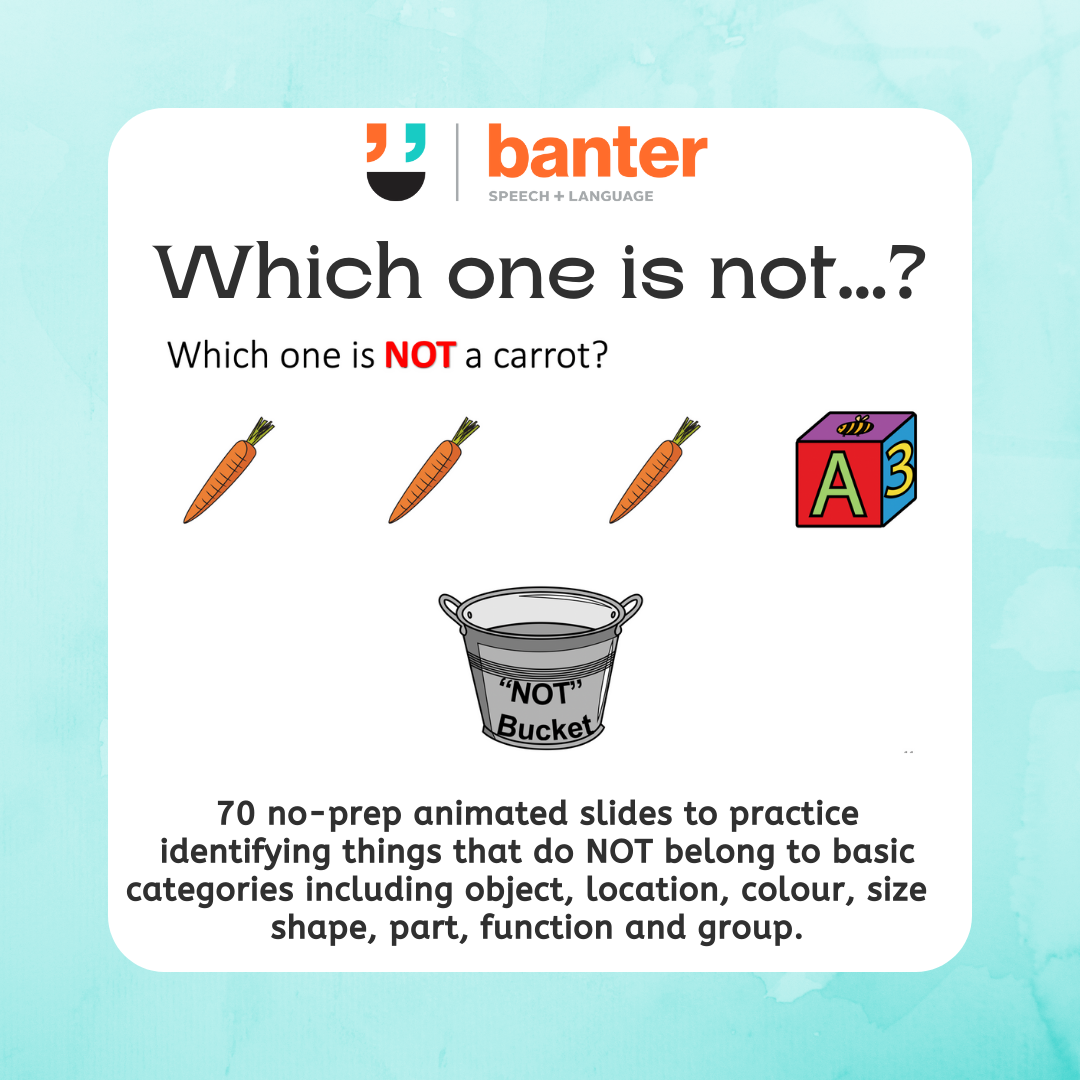




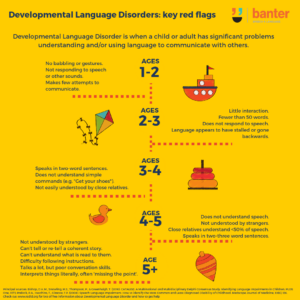
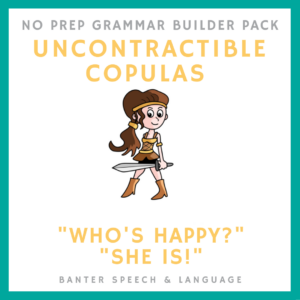
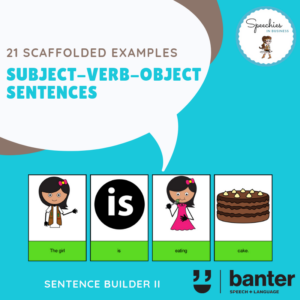
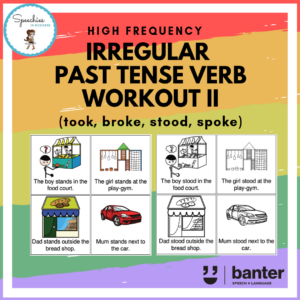
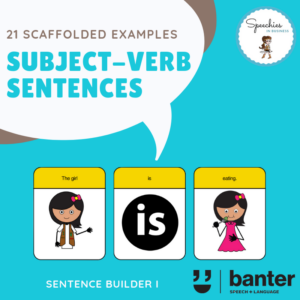 (L109) Subject-Verb (SV) Sentence Builders
(L109) Subject-Verb (SV) Sentence Builders 